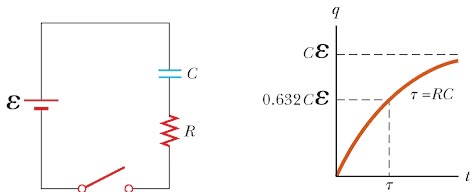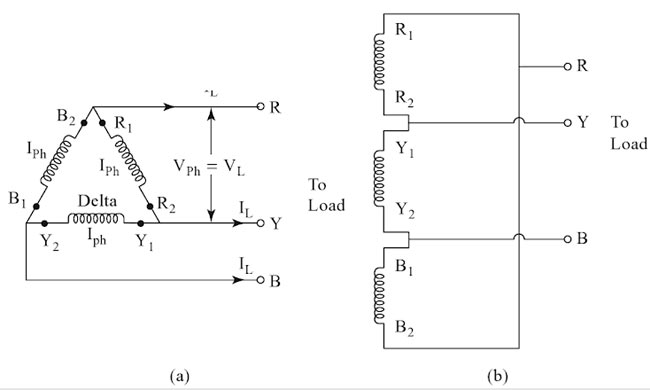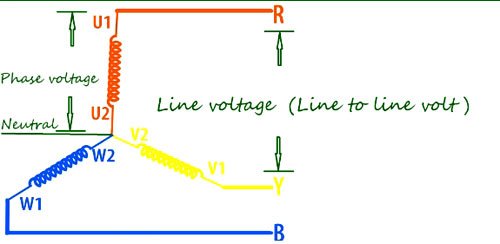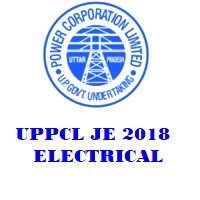UPPCL JE 2018 Electrical question paper with Explanation 27-Aug-2018
Ques.1. The dielectric strength of the transformer oil is
- 5 kV
- 132 kV
- 100 kV
- 30 kV✓
Transformer oil is used in the oil-filled transformer and in some other systems such as high voltage capacitors, fluorescent lamp ballasts, circuit breaker etc. Transformers generate a lot of heat by dropping high voltage to low voltage. The heat has to be removed or the copper will melt and electrical contact will be lost. Oil has a very good heat transfer coefficient (removes heat easily), does not conduct electricity at all (so electrical shorts won’t occur), and is selected to have a high boiling point, so it remains a liquid inside the transformer. It is also very chemically stable, so there is no breakdown over time. There are two main functions of the transformer oil:- The transformer oil should possess the following properties:
Ques.2. The critical temperature at which high ferromagnetic materials lose their magnetism is called
- Curie Point✓
- Hysteresis
- Transition temperature
- Standard temperature
In physics and materials science, the Curie temperature (TC), or Curie point, is the temperature above which certain materials lose their permanent magnetic properties, to be replaced by induced magnetism. Curie temperature of Iron is 1043 K. The Curie temperature is an essential temperature for a ferromagnetic material. For example, if a ferromagnetic material has a temperature under its Curie temperature, then the material has a net spontaneous magnetization, which means that the material becomes ferromagnetic, or magnetic. If a ferromagnetic material has a temperature over its Curie temperature, then the material becomes paramagnetic or does not become a magnet.
Ques.3. The rating of a battery is expressed in
- Ampere-Hour✓
- Watt-Hour
- Amperes
- Watts
The amount of energy that a battery can store is caged by its capacitor. A water tank, for example, with a capacity of 8000 liters can hold at most 8000 liters. Similarly, a battery can only store a fixed amount of electrical energy, typically marked on the side of the battery by the manufacturer. Battery capacity is measured in the amount of charge it can hold. Now we know the current is charged per unit time, therefore the product of current and time gives us the charge. That is why battery capacities are measured in milliampere-hour in the case of cellphone batteries or ampere-hour in the case of automotive batteries. Battery capacity = charge stored = current x time or amp-hr. The capacity of a battery is measured in amp-hours (Ah). This indicates the amount of energy that can be drawn from the battery before it is completely discharged A battery of 100 Ah should ideally give a current of 2 amps for 50 hours (i.e. 2 amps times 50 hours equals 100 amperes).
Ques.4. During capacitor charging, the voltage actually rises to ____ percent of its _____ value.
- 63.2, initial
- 63.2, final✓
- 37, initial
- 37, final
During capacitor charging, the voltage actually rises to 63.2 percent of its final value. Consider the series RC circuit. Considered the capacitor is initially uncharged with the switch opened. After the switch is closed, the battery begins to charge the plates of the capacitor and the charge passes through the resistor. As the capacitor is being charged, the circuit carries a changing current. Because of the presence of the resistor the capacitor is not charged all at once but gradually over time. The charging process continues until the capacitor is charged to its maximum equilibrium value, Q = Cε, where ε is the maximum voltage across the capacitor. Once the capacitor is fully charged, the current in the circuit is zero. If we assume the capacitor is uncharged before the switch is closed, and if the switch is closed at t = 0, we find that the charge on the capacitor varies with time according to the equation q = Q(1– e-t/RC) The RC time constant, also called tau, the time constant (in seconds) of an RC circuit, is equal to the product of the circuit resistance (in ohms) and the circuit capacitance (in farads), i.e. τ =RC The time constant represents the time required for the charge to increase from zero to 63.2% of its maximum equilibrium value. This means that in a period of time equal to one time constant, the charge on the capacitor increases from zero to 0.632. The time constant of a circuit tells about the charging and discharging rate of a circuit. The larger the time constant, the longer the charging and discharging process will take to reach the steady-state value and vice-versa. For example, if the time constant of a circuit in 1 second (i.e. RC = 1 second), it means that time required for the capacitor voltage to rise 63.2% of its final steady-state value is 1 second. It may be noted that the capacitor is almost fully charged (99.3%) after the time equal to 5time constants (i.e 5 RC).
Ques.5. The ampere-hour efficiency of lead-acid batteries is usually between ______
- 90-95%✓
- 55-60%
- 0-20%
- 30-35%
Lead-acid Battery
They are the oldest and most mature among the all-battery technologies. Because of their large applications, lead-acid batteries have the lowest cost of all-battery technologies.
This battery operates at an ambient temperature and has an aqueous electrolyte. Even though the lead-acid battery is relatively inexpensive, it is very heavy, with limited usable energy by weight (specific energy).
The efficiency of a cell can be considered in two ways:
- The quantity or ampere-hour (Ah) efficiency
- The energy or watt-hour (Wh) efficiency
The Ah efficiency does not take into account the varying voltages of charge and discharge. The Wh efficiency does so and is always less than Ah efficiency because the average p.d. during discharging is less than that during charging. Usually, during discharge the e.m.f. falls from about 2.1 V to 1.8 V whereas during charge it rises from 1.8 volts to about 2.5 V.
The charging voltage for any rechargeable battery is greater than the discharging voltage. The charging voltage is the sum of the battery e.m.f. and the voltage drop due to the battery’s internal resistance. The discharging voltage is the difference between the battery e.m.f. and the voltage drop due to the battery’s internal resistance. Due to the internal resistance of the battery, the discharged energy is always less than the charging energy.
Ah efficiency = amp-hour discharge ⁄ amp-hour charge
The Ah efficiency of a lead-acid cell is normally between 90 to 95%, meaning that about 100 Ah must be put back into the cell for every 90-95 Ah taken out of it. Because of gassing that takes place during the charge, the Ah available for delivery from the battery decreases.
(i) due to self-discharge of the plates caused due to local reactions
(ii) due to leakage of current because of faulty insulation between the cells of the battery.
The Wh efficiency varies between 72-80%.
If Ah efficiency is given. Wh efficiency can be found from the following relation:
Wh efficiency = (Ah efficiency × average voltage on discharge) ⁄ average voltage on the charge.
From the above, it is clear that anything that increases the charge volts or reduces the discharge volts will decrease huh efficiency. Because high charge and discharge rates will do this, hence it is advisable to avoid these.
Lead-acid storage batteries have innumerable applications. Some of them are listed below:
(i) Telephone and telegraphic services
(ii) Broadcasting stations
(iii) U.P.S systems
(iv) Railway signaling, train lighting
(v) Marine and submarine applications
Ques.6. The absolute permittivity of free space is given as
- 8.854 × 10−19
- 8.854 × 10−09
- 8.854 × 10−12✓
- 8.854 × 10−11
The permittivity of free space is a physical constant equal to approximately 8.85 × 10−12 Farad per meter (F/m). It is symbolized εo
Ques.7. The delta in a 3 phase system is formed by connecting _____ and the connections are continued to form a closed loop.
- One end of the winding to the starting end of other winding✓
- One end of an inductor to the starting end of the resistor
- One end of the resistor to the inductor
- One end of an inductor to the neutral end of the resistor
Delta Connection The delta connection is formed by connecting the end of one winding to the starting end of the other and connections are continued to form a closed loop. In this case, the current flowing through each line conductor is called line current IL and the current flowing through each phase winding is called phase current, Iph. However, we find that the phase voltage is the same as the line voltage in a delta connection. The supply terminals are taken out from the three junction points. The delta connection of windings has been shown in Fig.
Ques.8. The characteristics of the material that allows it to be pulled out into a wire are called as _____
- Solderability
- Malleability
- Ductility✓
- Superconductivity
Ductility:- Ductility is defined as the ability of the material to deform to a greater extent before the sign of the crack when it is subjected to tensile force or Ductility is said to be the property of a material to stretch without getting damaged. Ductile materials are those materials that deform plastically to a greater extent prior to fracture in the tension test. Mild steel, copper, and aluminum are ductile materials. Ductile metals can be formed, drawn, or bent because these processes involve shaping under tension. Ductility is measured in units of percentage elongation or percentage reduction in area in the tension test. The ductility of metals decreases as the temperature increases because metals become weak at increasing temperatures. Malleability:- Malleability is defined as the ability of the material to deform to a greater extent before signs of crack appear when it is subjected to compressive force. The term malleability comes from the word ‘hammer’ and in a narrow sense, means the ability to be hammered out into thin sections. The metals having malleable properties can be rolled or beaten into sheets. An example is aluminum foil. The difference between compressive and tensile stress, compressive stress is generated by the force acting towards the center, while tensile stress is generated by the force acting away from the material. In layman’s terms, compressive force makes the material smaller and the tensile force stretches the material. The differences between malleability and ductility are as follows: (a) Malleability is the ability of the material to deform under compressive force. Ductility is the ability to deform under tensile force. (b) Malleability increases with temperature while ductility decreases with increasing temperature. (c) All ductile materials are also malleable, but the converse is not true. (d) Malleability is an important property when the component is forged, rolled or extruded. Ductility is desirable when the component is formed or drawn. It is also desirable when the machine component is subjected to shock loads. Solderability:- Solderability has been defined simply as “the ability of a surface to be wet by molten solder.” Superconductivity:- Superconductivity is one of the most exciting phenomena in Physics, because of its peculiar nature and its wide application of this phenomenon. Superconducting materials are materials that conduct electricity without resistance below a certain temperature.
Ques.9. An alternating voltage of 50Hz frequency and 100 V maximum value is given by____
- V = 200 sin 628t
- V = 100sin 314t✓
- V = 100√2sin 157t
- V = 100√2sin 314t
The standard equation of alternating voltage is given as:- V = Vm.sin.2πft Where Vm = Maximum voltage t = time f = frequency Given Vm = 100 V f = 50 Hz V = 100sin2π50t V = 100sin 314t
Ques.10. The potential difference between any two lines of supply in a three-phase system is called ____
- Phase current
- Line voltage✓
- Line current
- Phase voltage
The potential difference between any two lines of supply is called line voltage and the current passing through any line is called line current. The potential difference between any one of the three lines and the neutral conductor or earth is called ‘phase voltage’ (Vph).


